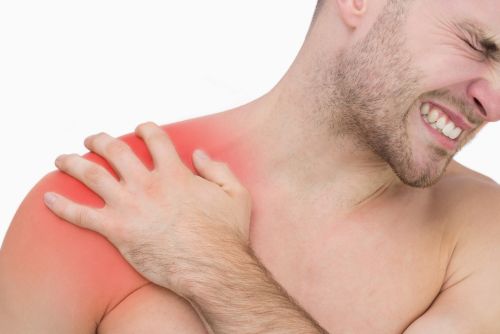Introduction:
Supraspinatus Tendinitis is a common condition characterized by inflammation or irritation of the supraspinatus tendon, one of the four rotator cuff muscles in the shoulder. This tendon plays a crucial role in arm elevation and rotation. When inflamed, it can lead to significant shoulder pain and limit movement, impacting daily activities and quality of life.
Cause:
The primary cause of supraspinatus tendinitis is often repetitive overhead activities, leading to overuse a microtrauma to the tendon. Other contributing factors include:
- Poor Posture: Slouching or rounded shoulders can narrow the rotator cuff tendons that pass through.
- Age-Related Degeneration: Tendons can weaken and become more susceptible to injury with age.
- Trauma: A direct fall or sudden forceful movement can injure the tendon.
- Improper Lifting Techniques: Using incorrect form when lifting heavy objects.
Clinical Features:
Patient typically presents with:
- Pain: Localized pain in the front or side of the shoulder, often radiating down the arm. The pain usually worsens with overhead activities or reaching behind the back.
- Tenderness: Palpation over the supraspinatus tendon can elicit pain.
- Weakness: Difficulty lifting the arm or performing specific movements due to pain or true weakness.
- Limited Range of Motion: Especially during abduction (lifting the arm away from the body) and external rotation.
- Crepitus: A grinding or crackling sensation may be felt with shoulder movement.
Risk Factors:
Several factors increase the likelihood of developing supraspinatus tendinitis:
- Occupations: Jobs requiring repetitive overhead arm movements (e.g., painters, carpenters, athletes).
- Sports: Activities like swimming, tennis, baseball, and volleyball are high-risk.
- Age: More common in individuals over 40.
- Poor shoulder Mechanics: Muscle imbalances or instability in the shoulder joint.

Physiotherapy Management:
Physiotherapy is crucial for effective management and recovery:
- Pain Management: Modalities like ice, heat, ultrasound, and TENS can reduce pain and inflammation.
- Rest and Activity Modification: Avoiding aggravating activities to allow the tendon to heal.
- Manual Therapy: Joint mobilizations and soft tissue massage to restore joint mechanics and reduce muscle tensions.
- Strengthening Exercises: Gradual strengthening of the rotator cuff muscles, scapular stabilizations, and surrounding shoulder muscles.
- Stretching: Improving flexibility and range of motion.
- Postural correction: Addressing poor posture to optimize shoulder mechanics.
- Ergonomic Advice: Guidance on proper body mechanics for work and daily activities
Conclusion:
Supraspinatus Tendinitis can be a debilitating condition, but with early diagnosis and a comprehensive physiotherapy program, most individuals achieve significant pain relief and restore shoulder function. Adhering to rehabilitation exercises and adopting preventive measures are key to long-term recovery and preventing recurrence.
What is Supraspinatus Tendinitis?
Answer: It is an inflammation of the supraspinatus tendon in the rotator cuff, causing shoulder pain and limited movement.
What are the common causes of Supraspinatus Tendinitis?
Answer: Repetitive overhead activities, poor posture, age-related tendon degeneration, trauma, and improper lifting techniques.
How is Supraspinatus Tendinitis managed in physiotherapy?
Answer: Management includes pain-relief modalities, rest, manual therapy, strengthening exercises, stretching, posture correction, and ergonomic advice.

